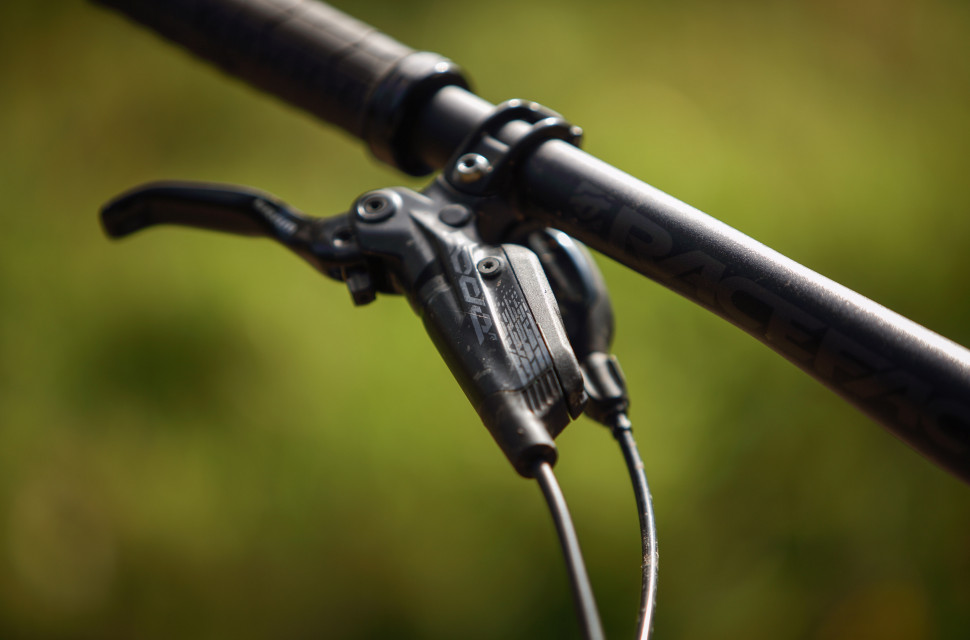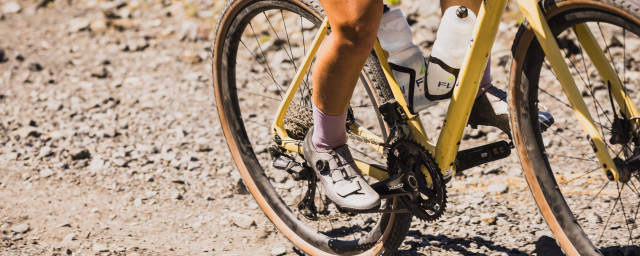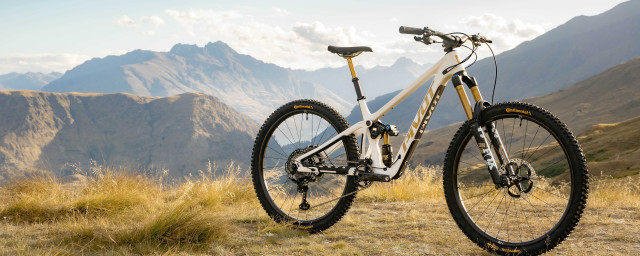How to bleed SRAM and Hayes

As complicated as it may sound, bleeding your SRAM, Hayes or Magura hydraulic brakes is actually a very simple task, requiring only a few tools and some basic knowledge. Here's everything you need to know and how to do it.
- Which disc brake pads are best for mountain bikes? Sintered or organic?
- What's the best way to clean disc brakes on a bicycle?
- Talking disc brake technology with SRAM
What is a brake bleed?
A brake bleed is an easy maintenance task that’s performed in order to either remove contaminants (air, water, etc) from the brake fluid or replace the fluid entirely.
This should be done at least once a year but also after any point at which the brake hose has been removed from either the lever or caliper. So that’s when trimming brake hoses, installing new brakes onto an internally routed frame or replacing old calipers, levers or hoses with new components. All of these tasks can invite contaminants into the system, hindering brake performance.
How do I know if my brakes need bleeding?
The best way to find out whether your brakes need a bleed is to squeeze the brake lever. It should feel sharp and strong with a clear bite point. If it feels spongy or if the lever touches the bar when you pull it with little resistance, that indicates that the brake will benefit from a bleed. Likewise, if your brake lever’s bite point drifts outward after quick successive pulls on the lever.
Furthermore, if your brakes feel as if they are lacking power, bleeding the brake could solve your issues.
How are bleeding SRAM, Hayes, and Magura brakes different?
Where Shimano, Hope, TRP, and Tektro brakes utilise a funnel and gravity to get the job done, SRAM, Hayes, and Magura brakes use two syringes that exchange fluid from one end of the brake to the other.
This method of bleeding requires a bit more setup and more cleanup but, because there’s a strong flow of fluid, it can be more effective at removing contaminants from the system. It can be trickier to top up fluid, however.
What brake bleeding tools do I need?
- The correct bleed kit for your brake brand and/or model
- The correct brake fluid DOT or mineral oil (These are not cross-compatible)
- Rag or paper towels
- Workstand
- Allen and/or Torx keys
- Bleed block
- Isopropyl alcohol or brake cleaner
How it’s done
1. Prepare your work area
A successful brake bleed can be completely devastated if any brake fluid finds its way onto your brake pads or rotors. With this in mind, remove your bike’s wheels and pads, and place them in a safe place or even better, in another room, well clear of any potential contaminants.
A clean rag or shop towel will make a useful area to keep the small brake fixtures safe while keeping any work surfaces clean of stray brake fluid. Placing your bike in a work stand will make the job much easier, and more comfortable.
Don’t forget to insert a bleed block into the caliper of the brake you’re bleeding.
2. Prepare your syringes
Your bleed kit will come with two syringes - both of which need some fluid inside. One needs to be filled three-quarters of the way, the other only one-quarter. This doesn’t need to be completely accurate but these measurements will help you move more fluid through the system.
Once your syringes are appropriately filled, turn them so the tip is facing the ceiling and push any air out of the syringe, using a cloth or rag to soak up any excess fluid.
3. Install syringes onto the brake lever and caliper
This is best carried out one-by-one. Start adjusting the reach and bite point so they’re fully open (if your brakes have them) and remove the bleed port screw on the lever, found on the body or reservoir of the lever. This is where you’ll screw the syringe with the most fluid.
Then move to the caliper bolt where you’ll do exactly the same.
- If you’re servicing SRAM brakes with the Bleeding Edge tech, pull out the rubber plug and using a 4mm Allen, gently loosen off the port by turning anticlockwise. Though only do this to loosen the port a touch at this point. Then push the syringe with the Bleeding Edge tool into the port and turn anticlockwise one turn which then opens the system.
4. Bleed the brake
With your syringes now in place, it’s time to push the fluid through the system. Starting at the lever, push down on the syringe’s plunger but stop before any air enters the system. Repeat this until the fluid runs clear, or there are no more bubbles rising into either syringe. Replace or top up the fluid if you need to.
If the fluid isn’t clear, repeat step 2 until it runs clear.
5. Close off the caliper end and bleed the lever
With clean fluid in the system or with as much air removed from the fluid as possible, remove the caliper syringe and close off that end of the brake by reinstalling the bleed port screw.
- On brakes with Bleeding Edge, pull out the syringe and tighten the port with that 4mm Allen. Then replace the rubber plug.
Keeping the lever syringe in place, gently pull up on the plunger to create a vacuum and pull any air. Pulling on the brake lever can also help dislodge any stray air bubbles. Once complete, push on the syringe’s plunger to pressurize the system. Then unscrew the syringe and replace the bleed port screw.
6 Clean up and replace pads and wheels
You should now have a perfectly bled brake but before going any further it’s vital that you clean off any excess brake fluid that may have dripped onto your frame, caliper or lever using isopropyl alcohol or brake cleaner. Brake fluids can be very harsh on your bike’s paintwork and can ruin brake pads and rotors.












